חדשות המחקר

Khalaf Kridin: The Burden of Coronavirus Disease 2019 and Its Complications in Patients With Atopic Dermatitis-A Nested Case-Control Study (Dermatitis .)
The burden of coronavirus disease 2019 (COVID-19) among patients with atopic dermatitis (AD) is poorly understood. The aims of the study were to characterize a large cohort of COVID-19-positive adult patients with AD and to identify predictors of COVID-19-associated hospitalization and mortality.

Amir Asher Kuperman, Daniel Glikman: COVID-19 in a Subset of Hospitalized Children in Israel (J Pediatric Infect Dis Soc .)
Most pediatric coronavirus disease 2019 (COVID-19) is mild. We assessed nationally severe COVID-19, including pediatric inflammatory multisystem syndrome (PIMS), in hospitalized children.
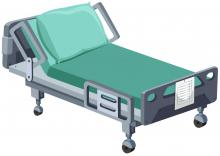
Marie Noufi Barohom: Case Report: Severe Hypocalcemic Episodes Due to Autoimmune Enteropathy (Front Endocrinol (Lausanne) .)
Autoimmune polyendocrinopathy-candidiasis-ectodermal dystrophy (APECED) is a rare monogenic disorder, associated with endocrine deficiencies and non-endocrine involvement. Gastrointestinal (GI) manifestations appear in approximately 25% of patients and are the presenting symptom in about 10% of them. Limited awareness among pediatricians of autoimmune enteropathy (AIE) caused by destruction of the gut endocrine cells in APECED patients delays diagnosis and appropriate therapy. We describe an 18-year-old female presenting at the age of 6.10 years with hypoparathyroidism, oral candidiasis and vitiligo.

Avi Benov: Qualifying coronavirus disease 2019 convalescent plasma donors in Israel (Vox Sang .)
Passive immunization using investigational COVID-19 convalescent plasma (CCP) is a promising therapeutic strategy and could improve outcome if transfused early and contain high levels of anti-SARS-CoV-2 antibodies. We report the management of a national CCP collection and distribution program in Israel.
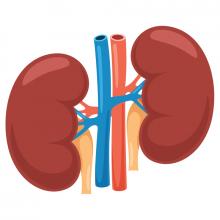
Khaled Khazim, Fedaa Ghanem: The Role of Vascular Lesions in Diabetes Across a Spectrum of Clinical Kidney Disease (Kidney Int Rep .)
The clinical-histologic correlation in diabetic nephropathy is not completely known. We analyzed nephrectomy specimens from 90 patients with diabetes and diverse degrees of proteinuria and glomerular filtration rate (GFR).

Andrei Braester: Difference between Japanese and White patients with acute pulmonary embolism (Thromb Res . )
Pulmonary embolism (PE) is a major health problem in the world, and the third most frequent vascular disease in the Western countries. The incidence rates of PE were reported to be lower in Asian countries than in Western countries; however, more recently, PE incidence has been on the rise in Asian countries and has become a common health problem. Racial differences, and distinct resource availability and treatment patterns may have notable implications in the presentation and outcomes of patients with PE. However, there is a scarcity of data on differences in the clinical characteristics and outcomes of PE patients based on their racial background. Therefore, in an international collaborative effort, we sought to compare the clinical characteristics, management strategies and clinical outcomes in Japanese patients with PE versus White patients.

Amir A. Kuperman, Vyacheslav Gurevich: Assessing the involvement of the placental microbiome and virome in preeclampsia using non coding RNA sequencing (J Perinat Med . )
Preeclampsia is a dangerous pregnancy complication. The source of preeclampsia is unknown, though the placenta is believed to have a central role in its pathogenesis. An association between maternal infection and preeclampsia has been demonstrated, yet the involvement of the placental microbiome in the etiology of preeclampsia has not been determined. In this study, we examined whether preeclampsia is associated with an imbalanced microorganism composition in the placenta.

Elizabeh Eshel, Dally Najib: Crizotinib acts as ABL1 inhibitor combining ATP-binding with allosteric inhibition and is active against native BCR-ABL1 and its resistance and compound mutants BCR-ABL1 T315I and BCR-ABL1 T315I-E255K (Ann Hematol .)
Resistance remains the major clinical challenge for the therapy of Philadelphia chromosome-positive (Ph+) leukemia. With the exception of ponatinib, all approved tyrosine kinase inhibitors (TKIs) are unable to inhibit the common "gatekeeper" mutation T315I. Here we investigated the therapeutic potential of crizotinib, a TKI approved for targeting ALK and ROS1 in non-small cell lung cancer patients, which inhibited also the ABL1 kinase in cell-free systems, for the treatment of advanced and therapy-resistant Ph+ leukemia.

Alexey Lazutkin, Alexander Izakson: Peripartum anesthetic management of women with SARS-CoV-2 infection in eight medical centers across three European countries: prospective cohort observation study (J Matern Fetal Neonatal Med .)
Several reports of obstetric anesthesia management have been published since the onset of the COVID-19 pandemic. We aimed to collect high-quality broad and detailed data from different university medical centers in several European Society of Anesthesiologist countries.
Lital Ashtamkar Matok, Maya Azrad, Tamar Leshem, Anan Abuzahya, Thanaa Khamaisi, Tatiana Smolkin, Avi Peretz: Mother-to-Neonate Transmission of Antibiotic-Resistant Bacteria: A Cross-Sectional Study (Microorganisms .)
We evaluated carriage rates of extended spectrum β-lactam-producing Enterobacterales (ESBL-E), Carbapeneme-resistant Enterobacterales (CRE), vancomycin-resistant Enterococci (VRE), and methicillin-resistant Staphylococcus aureus (MRSA) among pregnant women and determined the maternal-to-neonate transmission rates of these antibiotic-resistant bacteria (ARB).

Tawfik Khoury, Wisam Sbeit: Peri-ampullary diverticulum was associated with a higher rate of acute cholangitis among patients with choledocholithiasis (Surg Endosc .)
Choledocholithiasis is a commonly encountered disease that is associated with various clinical presentations ranging from mild form of biliary colic to severe life-threatening acute cholangitis. Recently, peri-ampullary diverticulum (PAD) has been linked to the development of biliary diseases; however, data regarding its association with the development of acute cholangitis in the setting of choledocholithiasis are scarce. We aimed to identify predictors, specifically PAD, for the development of acute cholangitis in patients with choledocholithiasis.
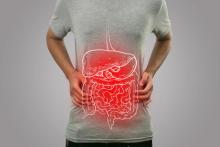
Adi Eshel, Aviel Meoded, Omry Koren: Projection of Gut Microbiome Pre- and Post-Bariatric Surgery To Predict Surgery Outcome (mSystems . )
Bariatric surgery is often the preferred method to resolve obesity and diabetes, with ∼800,000 cases worldwide yearly and high outcome variability. The ability to predict the long-term body mass index (BMI) change following surgery has important implications for individuals and the health care system in general. Given the tight connection between eating habits, sugar consumption, BMI, and the gut microbiome, we tested whether the microbiome before any treatment is associated with different treatment outcomes, as well as other intakes (high-density lipoproteins [HDL], triglycerides, etc.)
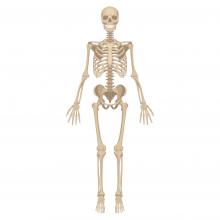
David Karasik: Footprints in the Sand: Deep Taxonomic Comparisons in Vertebrate Genomics to Unveil the Genetic Programs of Human Longevity ( Front Genet .)
Given the genetic constraints between vertebrates, we posit that a combination of approaches, of parallel meta-analysis of human longevity along with refined analysis of other vertebrate clades having exceptional longevity, will aid in resolving key regulators of enhanced lifespan that have proven to be elusive when analyzed in isolation.

Edo Y Birati: Mental Health Disorders and Emergency Resource Use and Outcomes in Ventricular Assist Device Supported Patients (Am Heart J .)
There are limited data describing the prevalence of mental health disorders (MHDOs) in patients with ventricular assist devices (VADs), or associations between MHDOs and resource use or outcomes. We used the Nationwide Emergency Department Sample administrative database to analyze 44,041 ED encounters for VAD-supported adults from 2010 to 2017, to assess the relationship between MHDOs and outcomes in this population. MHDO diagnoses were present for 23% of encounters, and were associated with higher charges and rates of admission, but lower mortality.
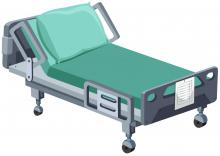
Khalaf Kridin: Is pyoderma gangrenosum associated with solid malignancies? Insights from a population-based cohort study (Australas J Dermatol . )
The question of whether solid malignancies (SMs) are associated with pyoderma gangrenosum (PG) remains to be conclusively answered. Evaluates the risk of SM among patients with PG and the odds of PG after a diagnosis of SM.




